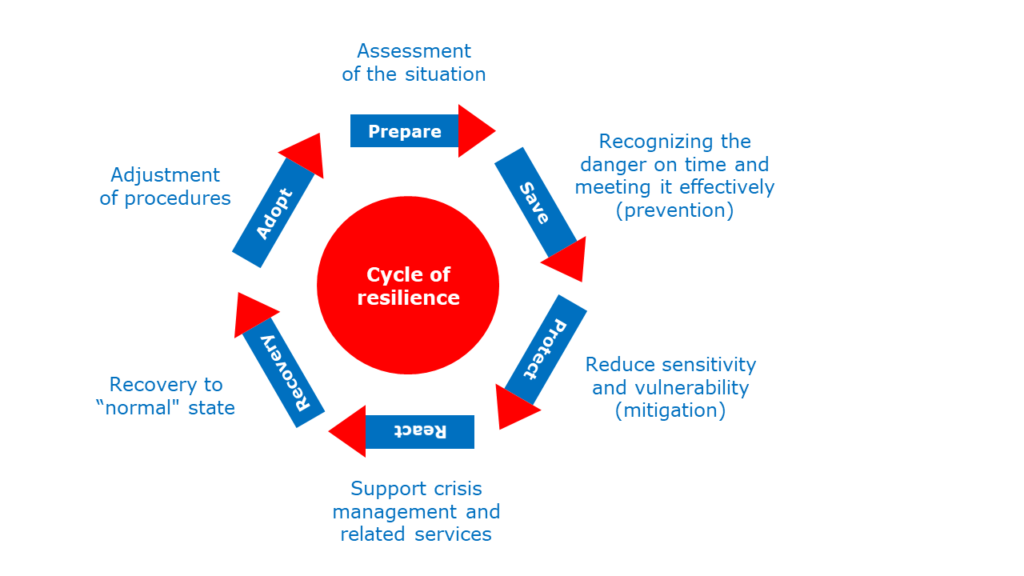Resilience of the Infrastructure
For several years now, risk management in relation to infrastructure has been accompanied by the term resilience. The UN Office of Disaster Risk Reduction defines resilience as “the ability of a system, community or society exposed to hazards to resist, mitigate, adapt, change and recover from the effects of a hazard in a timely and efficient manner through risk management, including the maintenance and restoration of essential basic structures and functions”. [1]
Resilience thus determines, to put it simply, three characteristics of the system: resilience, adaptability and the ability to recover lost potential.
Although resilience is very closely linked to risk management, it goes far beyond the scope of ISO 31000. This is because classical risk management is based on the identification of potential risks and determines suitable strategies of proactive or reactive measures based on the probability of their occurrence and their possible effects. The resilience approach, on the other hand, is much broader and also takes into account those cases in which the organization is confronted with threats that were previously either unknown or considered unrealistic. Resilience management of the infrastructure is not limited to specific, potential risks, but is limited to ensuring the necessary functionality of the organization, regardless of the nature of possible destructive events. The main characteristic of resilient infrastructure is the ability to cope with both known and unforeseen events. For this purpose it will be equipped with appropriate procedures and management mechanisms. These mechanisms should make it possible to resist the threats and, if this is not possible immediately, to adapt quickly to the unfavorable circumstances and to recover the lost potential as quickly as possible (see picture below).

The relationship between risk and resilience is often illustrated by a graph showing the change over time in the critical functionality of the system (see figure below). The occurrence of a critical event leads to a sudden loss of functionality. Depending on the characteristics of the resilience, this functionality can be restored faster or slower and thus stabilize at a level that corresponds to the original one. The speed of recovery of lost performance is the basis for determining the degree of resilience.
![Characteristics of the resilience of the infrastructure [2]](http://wordpress1906309.home.pl/inframa/wp-content/uploads/2020/09/Characteristics-of-the-resilience-of-the-infrastructure-2-1024x576.png)
- United Nations Office for Disaster Risk Reduction (2009): Terminology on Disaster Risk Reduction. https://www.unisdr.org/we/inform/terminology#letter-c (called on 1.7.2019)
- Linkow, I. et al.: Changing the resilience paradigm. “Nature Climate Change”. Vol 4, June 2014